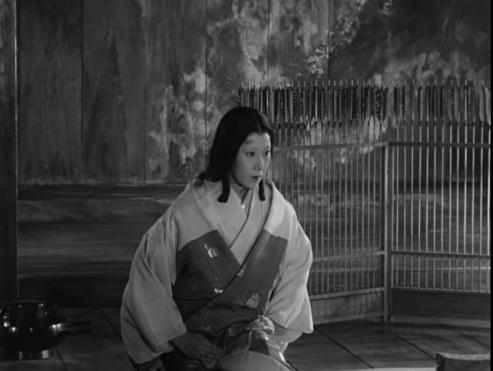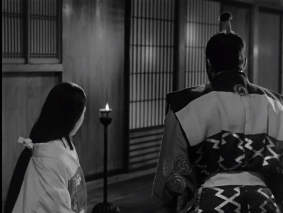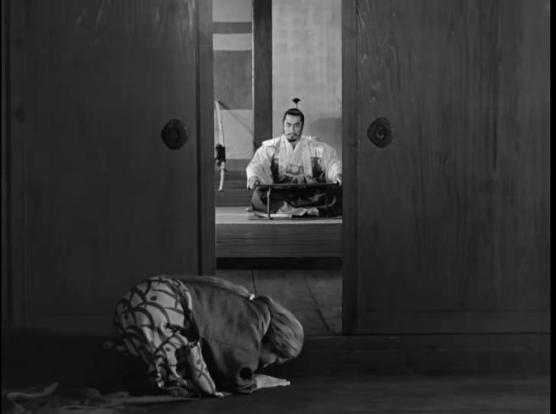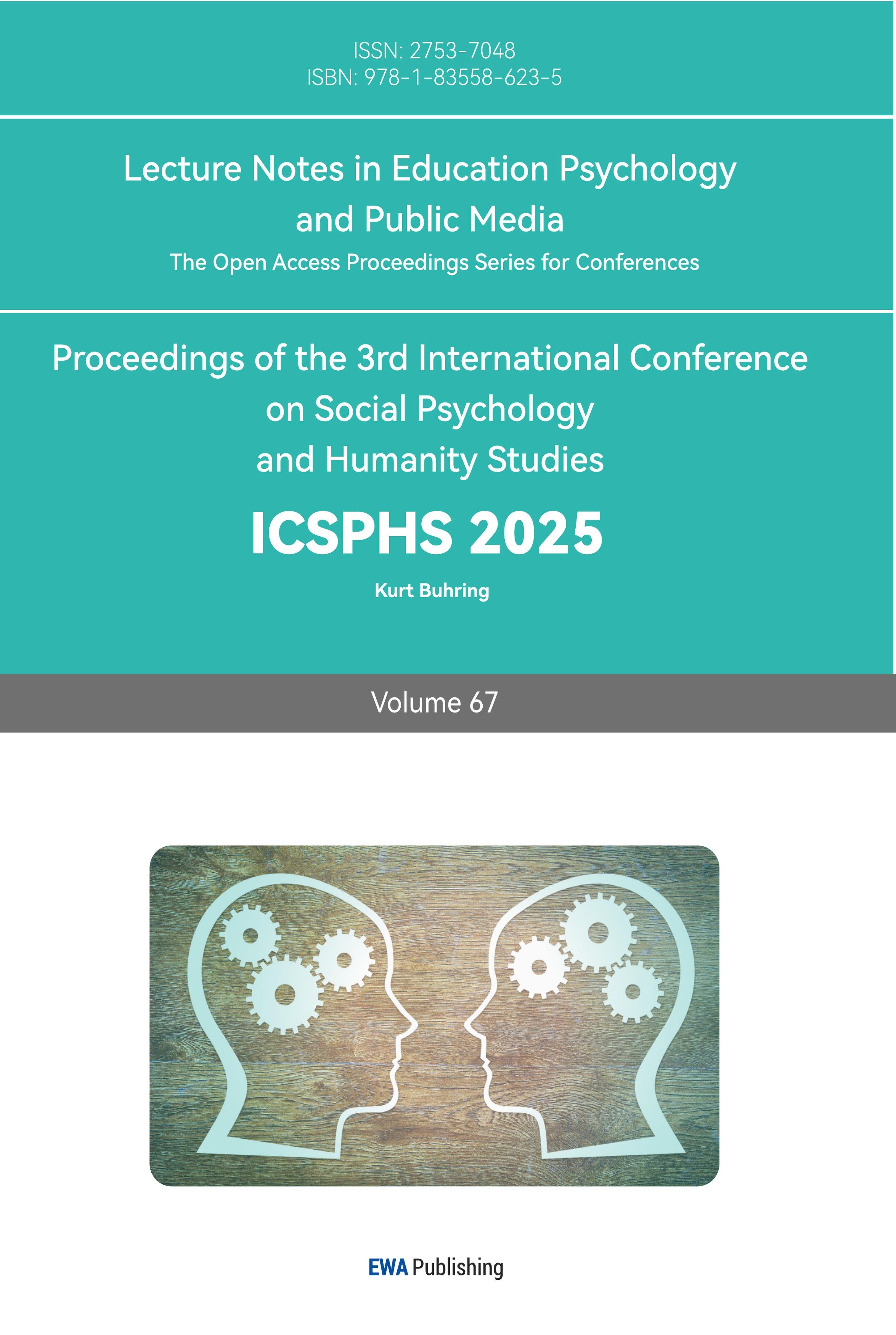1. Introduction
In recent years, the study of Akira Kurosawa's cinematic art has become increasingly in-depth around the world, especially in terms of his narrative techniques, visual aesthetics, and psychological portrayals. Scholars have analyzed the uniqueness of Kurosawa's films from various perspectives, including his artistic style, which is deeply influenced by East Asian aesthetics, his strategy of adapting classic literature, and the complexity of characterization in his films. In addition, with the continuous development of film theory, the use of white space in films has gradually become a hot research topic.
However, according to Yoshimoto , many studies have paid attention to the art of cinematic techniques in Kurosawa's films, relatively few studies have comprehensively and deeply analyzed the art of white space in specific works such as Throne of Blood[1]. In particular, there is still much room for research in combining the art of white space with the narrative structure, visual expression, psychological depth, and other dimensions of the movie. In addition, research on how the art of white space affects the audience's emotional resonance, cognitive process, and the overall artistic effect of the movie also needs to be further deepened. The purpose of this paper is to explore the art of white space in Akira Kurosawa's film Throne of Blood, to study its multiple roles in storytelling, visual expression and psychological depth, and how these roles work together to elevate the film to a new level of artistic achievement.
This paper will use textual research method, image analysis method, psychological analysis method and comparative research method to conduct the research. This study will fill the gap in the current research on the art of white space in Akira Kurosawa's film Throne of Blood, and provide new perspectives and cases for the study of film art theory. Through the in-depth analysis of the art of white space, the theoretical system of film narratology, visual aesthetics and psychological portrayal can be further enriched and improved. This study has important practical guidance significance for movie creators. By revealing the successful strategy of using the art of white space in Throne of Blood, it can provide useful reference and inspiration for other movie creators and promote the innovation and development of movie art.
This study also helps to enhance the audience's appreciation of movie art. By understanding the use of white space in Throne of Blood and its effects, the audience can understand and feel the artistic charm of the movie in a deeper way, thus enhancing the viewing experience and emotional resonance. With the continuous development of movie art, the use of white space art in movies will be more extensive and in-depth. This study provides a direction and foundation for future research, and it is suggested that future research can further explore the application of white space in different types of movies and the differences in their effects; at the same time, it can also pay attention to the role and influence of white space in cross-cultural communication. In addition, the innovative application of white space art in new media art can be explored by combining new technological means such as virtual reality (VR) and augmented reality (AR).
2. The Nature of Whitespace in East Asian Art and Its Application in Film
White space, or ku in Japanese aesthetics, embodies the notion of emptiness, silence, and the potentiality of existence. It is not merely the absence of elements, but a conscious effort to leave space for the viewer's imagination and interpretation. In East Asian art forms such as painting, calligraphy and gardening, white space is an important component that enhances the harmony, balance and expressiveness of the work. Therefore, it can be said that the art of white space has a long history in East Asian culture[2]. When applied to film, white space is a powerful tool for creating atmosphere, directing focus and evoking deep emotional responses.
When white space is introduced into the realm of cinema, it also shows great vitality. In movies, white space is not only limited to the blank area on the screen, but also covers multiple levels such as plot, dialog and performance. according to German aesthetician Wolfgang Iser and his Reception Theory[3], the uncertainty and the void of meaning in this article of the work are the basic conditions for making readers accept it and producing social effects. He believes that a work does not depend on what it says, but on what it does not say. He emphasized that the significance of a work does not lie in the work itself, but that what is special about literary art is that uncertainty and gaps in meaning provide readers with the possibility of constant dynamic reflection and imagination. The more gaps a work provides, the more the reader can actualize and colorize the content of the work. Specifically, the application of white space in movies is mainly reflected in the following three aspects: creating atmosphere and guiding focus, evoking deep emotional responses.
Take Akira Kurosawa's Throne of Blood as an example, he skillfully uses white space in his movie. In key scenes such as the assassination of Takeshi Washizu (Macbeth in Shakespeare's original novel), Kurosawa does not directly show the bloody assassination process,but hints at the violence through the mannerisms of Washizu's wife (as shown in Figure 1) and the creation of a tense atmosphere. This treatment not only intensifies the tense atmosphere, but also allows the audience to actively participate in the construction of the psychological image of the crime, so as to deeply experience the tension of the plot and the complex fluctuation of the character's heart. This is precisely the unique charm and value of white space in the movie.

Figure 1: Mannerisms of Washizu's wife[4].
3. Imagining the Plot: Invisible White Space
3.1. The Invisibility of Key Scenes
In Throne of Blood, Akira Kurosawa's invisible treatment of key scenes, especially the assassination of Washizu Takeshi, is an outstanding example of the application of the art of white space in film. Kurosawa did not choose to directly show this bloody assassination, but through the following subtle arrangements, he allows the audience to build up the violent picture in their imagination, and then deeply experience the tension of the plot and the complex fluctuation of the characters' hearts.
First of all, he utilizes Washizu's wife Asaharu's (Asamochi) mannerisms to indirectly convey the message of the assassination. Asamochi's words and actions reveal uneasiness, nervousness, and even acquiescence to or push for the impending violence, and these subtle clues lead the viewer to fill in the blanks on their own and visualize the exact scene of the assassination. This treatment not only avoids a direct display of gore, but also enhances the audience's sense of participation and immersion.
In addition, Kurosawa skillfully utilizes the creation of tension to enhance the effect of white space. Before and after the assassination, through the contrast of light and shadow, the music and the use of camera language, he creates a depressing, mysterious and crisis-filled atmosphere. This atmosphere not only intensifies the audience's psychological tension, but also makes them focus more on the inner world of the characters and their moral choices, so that they can more deeply understand and feel the moral meaning behind this behavior. As Lehne and Koelsch researched[5], the sense of tension in a movie can make the audience more focused.
At last, this white space technique also gives the audience a chance to face the moral meaning of the behavior and the psychological fluctuation of the characters. Through imagination and reasoning, the audience is not only able to reconstruct the scene of the assassination, but also to think deeply about the motives and consequences behind the act as well as the complex relationship between the characters[6]. This in-depth thinking and emotional experience enables the audience to have a more comprehensive and deeper understanding of the movie's theme and characters.
3.2. The Openness of the Ending: the Profound Meaning of the Invisible Gap
In Throne of Blood, Kurosawa skillfully utilizes the technique of invisible blankness, leaving the audience with a wide space for imagination through the ambiguous ending. When the protagonist Washizu Takeshi embarks on his doomed path of rebellion, the movie does not directly show the specific scene of his death, but ends abruptly with an open-ended ending.
This treatment not only breaks the traditional narrative pursuit of clarity in the ending, but also triggers the audience to think deeply about the theme of the movie, the fate of the characters, and the larger issue of ambition and power. By omitting this key ending, Kurosawa succeeds in prolonging the emotional resonance of the movie in the hearts of the audience, further deepening the infectious power of the movie.
The open ending encourages the audience to actively participate in the interpretation of the film, and they need to construct their own ending of the story based on the clues in the film, the behavior of the characters, and their own understanding of human nature[7]. This sense of participation and immersion not only enhances the audience's viewing experience, but also makes the movie richer and more sustainable.
In addition, Kurosawa's approach also skillfully echoes the spirit of tragedy in Shakespeare's original Macbeth. Shakespeare's tragedy often reveals the complexity and tragedy of human nature by exploring the conflict between power, desire and human nature[8]. As an adaptation of Macbeth, Throne of Blood also inherits this spiritual core. The open-ended ending further emphasizes the tragedy, which makes the audience think about the theme of the film and at the same time have to face and reflect on the complexity and helplessness of real life.
4. Visualizing White Space: The Interaction of Light and Shadow
4.1. The Construction of Visual White Space
Akira Kurosawa's skillful use of light and shadow to create visual white space greatly enhances the visual language of the film. Light and shadow become an important tool for expressing emotions, characterization, and creating atmosphere. Akira Kurosawa uses a lot of contrasting shades of light and dark in his films, outlining and defining the blank space in the picture through the interweaving of light and shadow. This contrast of light and shadow not only enhances the hierarchy and three-dimensionality of the picture, but also makes the blank areas in the picture more eye-catching, guiding the audience's gaze and thoughts. In these blank areas, the viewer can freely imagine and associate, thus participating more deeply in the narrative and emotional expression of the movie. For example, during Washizu Takeshi's inner struggle and assassination, the uneven lighting and shadow casting not only intensify the character's sense of evil and danger (as shown in Figure 2), but also make the whole scene full of tension and uneasiness. The creation of this atmosphere not only deepens the audience's anticipation and attention to the plot development, but also makes them more engaged and immersed in the movie.

Figure 2: The flickering light outside the door[4].
4.2. Minimalism and Focus: The Visual Aesthetics of White Space in Throne of Blood
In the movie, many scenes adopt the concept of minimalist design, which focuses the audience's attention on the key plot and character performances by reducing the redundant elements and details in the screen. This design not only makes the screen more concise and clear, but also gives the movie a unique visual aesthetic[9]. The role of white space is indispensable, as the “negative space” in the picture, it forms a sharp contrast with the main elements, thus guiding the audience's vision and thinking. It can be said that white space plays an important role in minimalist design, and by creating visual “blanks”, it guides the audience to focus on the core elements of the movie. In Throne of Blood, Akira Kurosawa skillfully utilizes white space to direct the audience's attention to the characters' facial expressions, body language, and key plot developments. This kind of guidance not only makes the narrative of the movie more compact and powerful, but also allows the audience to understand and feel the inner world and emotional changes of the characters more deeply.
4.3. Composition and Choice of Viewpoint
Kurosawa also embodies the spirit of minimalism in his composition and choice of perspective. He often uses simple compositional methods, such as placing the character in the center of the screen or adopting symmetrical composition (as Figure 3 has shown), in order to reduce visual interference in the screen. At the same time, he is also good at utilizing different perspectives to show the inner world of the characters and the development of the plot, so that the audience can understand and feel the theme and emotion of the film more deeply.

Figure 3: Symmetrical Composition[4].
4.4. Empty Camera and Silence
Kurosawa is also good at using empty shots and silence to express complex emotions and thoughts. At some critical moments, he would use long periods of silence and empty shots to guide the audience to think about the inner world of the characters and the meaning of the theme of the movie. This technique not only enhances the artistic impact of the movie, but also enables the audience to understand and feel the emotions and thoughts conveyed in the movie more deeply[10].
5. The Psychological Effect of White Space: Penetrating into the Character's Heart and Stimulating Emotional Resonance
In Throne of Blood, Akira Kurosawa not only utilizes the art of white space in the visual and narrative level, but also deeply penetrates it into the psychological level, revealing the complex emotions of the characters' inner world through delicate performances and camera language, and generating strong emotional resonance with the audience.
5.1. Complex Character Emotions: Psychological Depth under White Space
Akira Kurosawa is good at showing the complexity of his characters' inner feelings through the use of white space. In the movie, the inner worlds of the protagonist Washizu Takeshi and his wife Asama are particularly deeply portrayed. Their complex emotions of longing, struggle, fear and despair are not shown through direct dialogues or obvious behaviors, but are conveyed through subtle expressions, delicate movements, and subtle handling of the atmosphere. This psychological white space allows the audience to explore the inner world of the characters more deeply and experience their emotional changes and moral dilemmas as if they were happening to them.
For example, in the scenes of Takeshi Washizu's inner struggle, Kurosawa shows the character's inner struggles and contradictions through the contrast of light and shadow, the silent atmosphere, and the subtle changes in the character's facial expressions. When the audience watches these scenes, they not only feel the pain and struggle that the characters go through, but also reflect on and empathize with their own inner world.
5.2. Emotional Resonance: the Ultimate Goal of the Art of White Space
Through the strategic use of white space in the plot, visuals and psychology, Throne of Blood succeeds in creating a deep emotional resonance with the audience[11]. The movie is not just a form of entertainment, but also a work of art that can touch people's hearts and provoke thoughts. In the process of watching the movie, the audience will not only be attracted by the intense and exciting plot and wonderful performances, but also be touched by the ups and downs of fate and emotional changes experienced by the characters. This kind of emotional resonance makes the audience remain immersed in the atmosphere created by the movie after the movie is over, and generate deep thoughts and feelings about the theme of the movie and the fate of the characters.
6. Conclusion
Based on the literature, this paper analyzes the application of blank space in Throne of Blood. Throne of Blood guides the audience to imagine the key plot through the use of white space, which builds up the atmosphere and beauty of the movie in terms of visual expression, light and shadow contrasts, shadow effects, and minimalist scenic design, which together form the visual white space, and white space in terms of psychological portrayal to show the complexity of the character's inner world, which enables the audience to understand and feel the emotional changes of the character in a more in-depth manner, and thus affects their emotional resonance and cognition. Through the white space technique, the audience can understand and feel the emotional changes of the characters more deeply, thus affecting the audience's emotional resonance and cognition, and the audience is also attracted by the white space movie technique in the process of watching and generating in-depth thinking. As an adaptation of Shakespeare's Macbeth, Throne of Blood is not only faithful to the spirit of the original, but also skillfully integrates the white space technique of East Asian aesthetics, realizing a perfect combination of Eastern and Western cultures. To summarize, through the innovative use of white space technique, Throne of Blood demonstrates a unique artistic charm in storytelling, visual presentation and psychological portrayal, which elevates the film to a new level of artistic achievement. This technique not only enriches the expression of the movie, but also deepens the audience's understanding and feeling of the characters and themes.
References
[1]. Yoshimoto, M. (2000). Kurosawa: film studies and Japanese cinema. Duke University Press, Durham.
[2]. Fan, Z., Zhang, K., & Zheng, X. S. (2019). Evaluation and analysis of white space in Wu Guanzhong’s Chinese paintings. Leonardo, 52(2), 111-116.
[3]. Iser, W. (2014). Interaction between text and reader. In Readers and reading. 20-31.
[4]. Akira Kurosawa. (1957). Throne of Blood
[5]. Lehne, M., & Koelsch, S. (2015). Toward a general psychological model of tension and suspense. Frontiers in psychology, 6, 79.
[6]. Parker, B. (1997). Nature and society in Akira Kurosawa's Throne of Blood. University of Toronto Quarterly, 66(3), 508-525.
[7]. Richardson, B. (2011). Endings in drama and performance: A theoretical model. Current trends in narratology, 27, 181.
[8]. Kanzer, M. (1951). The central theme in Shakespeare's works. The Psychoanalytic Review (1913-1957), 38, 1.
[9]. Seppälä, J. (2016). Doing a lot with little: The camera’s minimalist point of view in the films of Aki Kaurismäki. Journal of Scandinavian Cinema, 6(1), 5-23.
[10]. Birn, J. (2014). Digital lighting & rendering. Pearson Education, London.
[11]. Zambrano, A. L. (1974). Throne of Blood": Kurosawa's" Macbeth. Literature/Film Quarterly, 2(3), 262-274.
Cite this article
Liu,F. (2024). The Art of White Space in the Film Throne of Blood (1957): A Comprehensive Exploration. Lecture Notes in Education Psychology and Public Media,67,57-63.
Data availability
The datasets used and/or analyzed during the current study will be available from the authors upon reasonable request.
Disclaimer/Publisher's Note
The statements, opinions and data contained in all publications are solely those of the individual author(s) and contributor(s) and not of EWA Publishing and/or the editor(s). EWA Publishing and/or the editor(s) disclaim responsibility for any injury to people or property resulting from any ideas, methods, instructions or products referred to in the content.
About volume
Volume title: Proceedings of the 3rd International Conference on Social Psychology and Humanity Studies
© 2024 by the author(s). Licensee EWA Publishing, Oxford, UK. This article is an open access article distributed under the terms and
conditions of the Creative Commons Attribution (CC BY) license. Authors who
publish this series agree to the following terms:
1. Authors retain copyright and grant the series right of first publication with the work simultaneously licensed under a Creative Commons
Attribution License that allows others to share the work with an acknowledgment of the work's authorship and initial publication in this
series.
2. Authors are able to enter into separate, additional contractual arrangements for the non-exclusive distribution of the series's published
version of the work (e.g., post it to an institutional repository or publish it in a book), with an acknowledgment of its initial
publication in this series.
3. Authors are permitted and encouraged to post their work online (e.g., in institutional repositories or on their website) prior to and
during the submission process, as it can lead to productive exchanges, as well as earlier and greater citation of published work (See
Open access policy for details).
References
[1]. Yoshimoto, M. (2000). Kurosawa: film studies and Japanese cinema. Duke University Press, Durham.
[2]. Fan, Z., Zhang, K., & Zheng, X. S. (2019). Evaluation and analysis of white space in Wu Guanzhong’s Chinese paintings. Leonardo, 52(2), 111-116.
[3]. Iser, W. (2014). Interaction between text and reader. In Readers and reading. 20-31.
[4]. Akira Kurosawa. (1957). Throne of Blood
[5]. Lehne, M., & Koelsch, S. (2015). Toward a general psychological model of tension and suspense. Frontiers in psychology, 6, 79.
[6]. Parker, B. (1997). Nature and society in Akira Kurosawa's Throne of Blood. University of Toronto Quarterly, 66(3), 508-525.
[7]. Richardson, B. (2011). Endings in drama and performance: A theoretical model. Current trends in narratology, 27, 181.
[8]. Kanzer, M. (1951). The central theme in Shakespeare's works. The Psychoanalytic Review (1913-1957), 38, 1.
[9]. Seppälä, J. (2016). Doing a lot with little: The camera’s minimalist point of view in the films of Aki Kaurismäki. Journal of Scandinavian Cinema, 6(1), 5-23.
[10]. Birn, J. (2014). Digital lighting & rendering. Pearson Education, London.
[11]. Zambrano, A. L. (1974). Throne of Blood": Kurosawa's" Macbeth. Literature/Film Quarterly, 2(3), 262-274.









